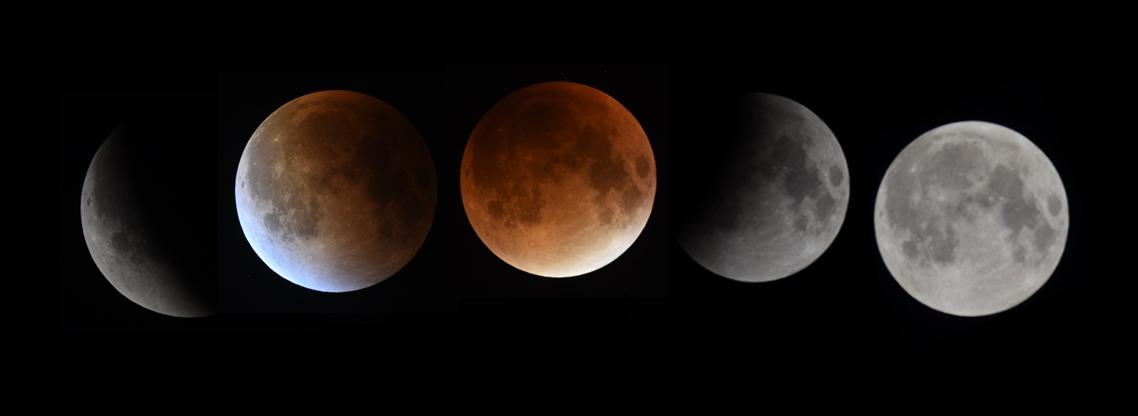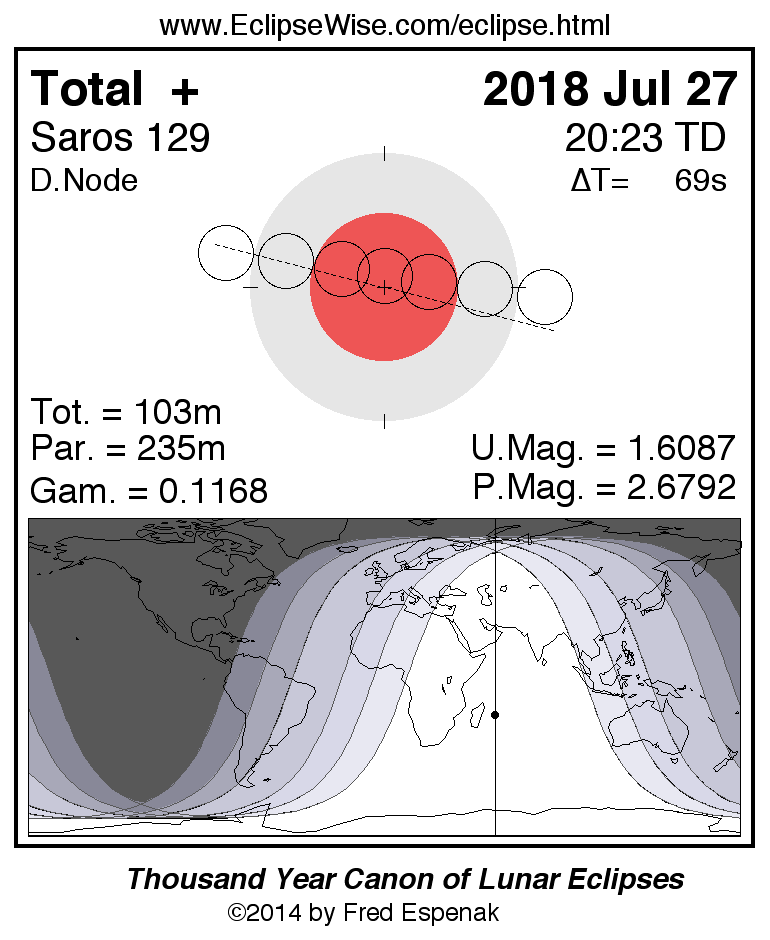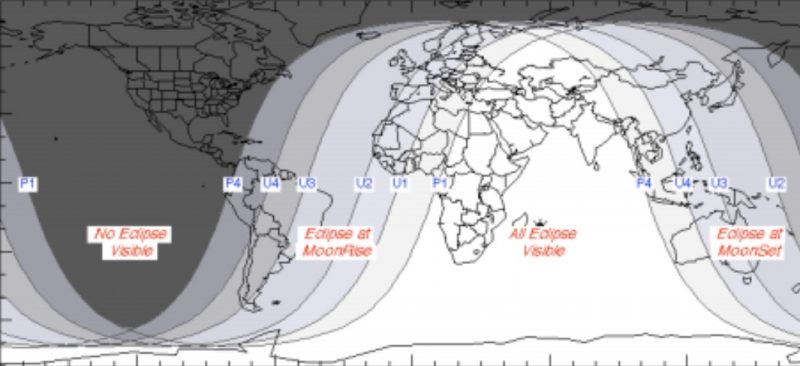Mars comes to opposition and is at its biggest and brightest on the 27th of July.
But that’s not going to be the only bright red object visible in the sky that evening.
That same evening, the Moon will rise when it is deep in the Earth’s shadow, a full lunar eclipse. Rising a red colour it will make a fantastic sight, rising in the south-eastern sky a little while after Sunset. Try and get a feature in the foreground to get a stunning photograph of the ruddy moon-rise. The event will be visible to the naked eye and should look even better in binoculars or a wide-field telescope. Once the eclipse has finished, turn your telescope towards Mars.

Progression of the Earth’s shadow timings are as follows:
Moon Rise: ~19:50 UT (~20:50 BST). (Will vary depending on your location in the UK).
Greatest eclipse: 20:22 UT (21:22 BST).
Total eclipse ends: 21:13 UT (22:13 BST).
The Moon will still be only about 19 degrees above the horizon as totality ends.
Partial eclipse ends: 22:19 UT (23:19 BST).
Penumbral eclipse ends: 23:28 UT (00:28 28th July. BST).
By the end of totality Mars will be more than 10 degrees above the horizon, so should be a little bit more observable, but will still be challenging so low down below the Moon.
Image of eclipse circumstances below taken from Fred Espenak’s excellent Eclipsewise Web site:
http://www.eclipsewise.com/lunar/LEprime/2001-2100/LE2018Jul27Tprime.html

The map below shows the visibility of the eclipse from Earth in a bit more detail.
(Taken from http://earthsky.org).
So get out that evening, (cloud permitting) and enjoy both the spectacular lunar eclipse, and then Mars in all it’s glory (global dust storm permitting).
The simulated images below show how the apparent disk size of Mars changes over the months either side of this opposition.

Dave

